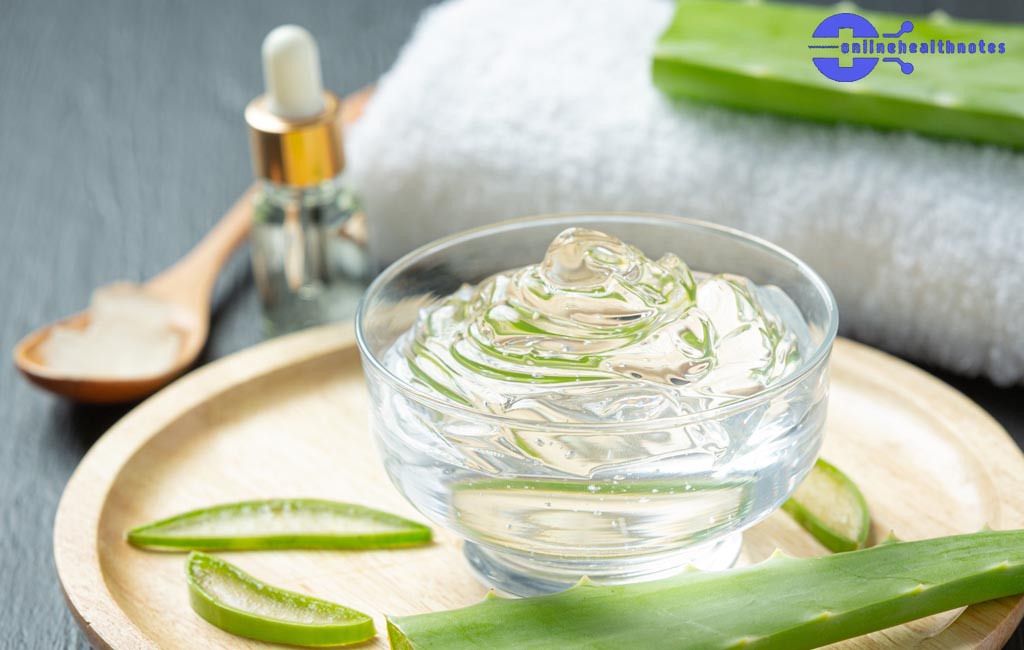Pros and Cons of Medicinal Aloe Varieties
| Aspect | Pros | Cons |
|---|---|---|
| Aloe Vera |
|
|
| Aloe Ferox |
|
|
| Aloe Arborescens |
|
|
| Aloe Perryi |
|
|
| Aloe Maculata |
|
|
Conclusion
Understanding the diversity of medicinal aloe varieties is essential for selecting the most suitable species for your health and wellness needs. Each variety, from the widely used Aloe vera for soothing burns and skin care, to the potent Aloe ferox for detox and digestive support, provides unique therapeutic benefits. By choosing high-quality, pure aloe and using it responsibly, you can maximize its natural healing properties and enjoy safe, effective results for both topical and internal applications.
Frequently Asked Questions about Medicinal Aloe Varieties
Here are some common questions and answers about medicinal aloe varieties to help you understand their benefits, uses, and safety.
What are medicinal aloe varieties?
Medicinal aloe varieties are species of aloe plants that contain bioactive compounds beneficial for skin, digestion, and overall health.
How many medicinal aloe varieties are commonly used?
While there are hundreds of aloe species, the most commonly used medicinal aloe varieties include Aloe vera, Aloe ferox, Aloe arborescens, Aloe perryi, and Aloe maculata.
What is the main difference between Aloe vera and other medicinal aloe varieties?
Aloe vera is widely cultivated and mild, making it suitable for daily skin and internal use, while other medicinal aloe varieties may have stronger bioactive compounds and specific traditional applications.
Can medicinal aloe varieties be grown at home?
Yes, most medicinal aloe varieties can be grown in pots or gardens, provided they have well-draining soil, adequate sunlight, and moderate watering.
Are all medicinal aloe varieties safe to eat?
Not all are safe for consumption. Some, like Aloe ferox and Aloe perryi, contain strong anthraquinones that can act as laxatives, so internal use should be moderate and cautious.
How do medicinal aloe varieties help with skin care?
Aloe gel from medicinal aloe varieties contains compounds that soothe burns, hydrate the skin, reduce inflammation, and promote wound healing.
Do medicinal aloe varieties have digestive benefits?
Yes, some species help with mild detoxification, support healthy digestion, and maintain gut hydration, especially when used in controlled doses.
How are medicinal aloe varieties used in traditional medicine?
Traditionally, these plants have been used as topical ointments for wounds, burns, and rashes, as well as in herbal tonics for digestion and immunity.
What precautions should I take when using medicinal aloe varieties?
Avoid excessive internal use of latex-rich species, consult a doctor if pregnant or breastfeeding, and always patch-test for skin allergies.
Can I use medicinal aloe varieties for hair care?
Yes, the gel can be applied to the scalp to moisturize, reduce dandruff, and strengthen hair naturally.
How do I store gel from medicinal aloevarieties?
Extracted gel should be kept in an airtight container in the refrigerator and used within 1–2 weeks for maximum potency.
Are there cosmetic products made from medicinal aloe varieties?
Yes, many lotions, creams, shampoos, and masks are formulated with aloe extracts, leveraging the hydrating and soothing properties of medicinal aloe varieties.
How can I identify high-quality medicinal aloe varieties?
Look for thick, fleshy leaves with clear inner gel, minimal yellow latex, and no signs of disease. Certified organic sources are ideal.
Do medicinal aloe varieties have anti-inflammatory properties?
Yes, compounds in aloe gel from medicinal aloevarieties reduce inflammation, which is why they are effective on burns, rashes, and minor skin irritations.
Can medicinal aloevarieties be combined with other herbs?
Absolutely. Many traditional remedies combine aloe with herbs like turmeric, calendula, or chamomile to enhance healing and skin benefits.
Aloe plants have long been treasured for their healing, soothing, and moisturizing properties. While Aloe vera is the most popular species, there are several medicinal aloe varieties that offer unique benefits. This comprehensive guide explores the top aloe species, their traditional uses, how to grow them, and tips for using them safely.
What Makes an Aloe Medicinal?
The healing potential of aloe plants lies in their bioactive compounds — polysaccharides, anthraquinones, vitamins, minerals, and enzymes. These components provide anti-inflammatory, antioxidant, and antimicrobial properties that make aloe valuable in both traditional and modern medicine.
- Polysaccharides help repair skin tissue and boost hydration.
- Anthraquinones (like aloin) act as natural laxatives and antimicrobial agents.
- Vitamins A, C, and E protect against oxidative stress.
- Enzymes support anti-inflammatory effects and digestion.
Top Medicinal Aloe Varieties
Aloe Vera (Aloe barbadensis miller)
Known as the “true aloe,” Aloe vera is the most popular medicinal variety. Its clear inner gel contains over 75 active compounds, making it a powerful natural remedy.
- Soothes burns and wounds.
- Hydrates and rejuvenates the skin.
- Supports gentle digestive detoxification.
Aloe Ferox (Cape Aloe)
Aloe ferox originates from South Africa and is known for its potent laxative latex and rich antioxidant content. It’s often used in detox formulations and high-potency skincare products.
- Effective for digestion and detoxification.
- Rich in anthraquinones and natural enzymes.
- Should be used cautiously due to strong effects.
Aloe Arborescens
This shrubby species is widely used in folk medicine for its immune-boosting and wound-healing effects. It’s more bitter than Aloe vera but has higher concentrations of beneficial compounds.
- Promotes faster wound healing.
- Strengthens immunity.
- Used in herbal tonics and ointments.
Aloe Perryi (Socotrine Aloe)
Aloe perryi hails from Socotra Island and has been used for centuries for skin and digestive issues. It’s valued for its rich anthraquinone content and anti-inflammatory effects.
- Soothes inflamed skin.
- Supports digestion in small doses.
- Should be used under guidance due to potency.
Aloe Maculata (Soap Aloe)
Known for its spotted leaves and saponin-like gel, Aloe maculata is a mild cleanser and great for DIY cosmetics. While it’s not as potent medicinally, it’s safe and gentle for daily skincare.
- Acts as a natural cleanser for skin and hair.
- Excellent for homemade skincare products.
- Lower potency makes it ideal for sensitive skin.
Comparison Table: Medicinal Aloe Varieties
| Variety | Origin | Main Use | Key Benefits | Precautions |
|---|---|---|---|---|
| Aloe Vera | Worldwide | Skin & digestion | Hydrating, healing | May cause mild irritation if unprocessed |
| Aloe Ferox | South Africa | Detox, skincare | Potent antioxidant | Strong laxative effect if overused |
| Aloe Arborescens | Africa | Immunity, wounds | Highly regenerative | Bitter taste; moderate use recommended |
| Aloe Perryi | Socotra | Skin, digestion | Anti-inflammatory | High potency; use with care |
| Aloe Maculata | Africa | Skincare | Mild, safe | Lower medicinal value |
How to Identify and Grow Medicinal Aloe Varieties
Most aloe varieties are easy to grow indoors or outdoors. They thrive in well-draining soil, moderate watering, and plenty of sunlight.
- Use sandy or cactus potting soil for better drainage.
- Water only when the topsoil is dry.
- Harvest mature leaves from the outer edges.
- Rinse latex before using aloe gel for consumption.
Common Uses of Medicinal Aloe
- Skincare: Treats burns, sunburns, and dryness.
- Digestive Support: Helps in mild detox and gut hydration.
- Immunity: Supports natural defenses with antioxidants.
- Haircare: Conditions scalp and prevents dandruff.
Safety and Precautions
Although aloe is generally safe, internal use of unprocessed latex or excessive consumption may cause digestive upset. Always patch-test aloe products on your skin before using them regularly.
- Avoid ingesting raw aloe latex.
- Consult a healthcare provider before taking aloe internally.
- Pregnant or breastfeeding women should avoid aloe supplements.
Pros and Cons of Medicinal Aloe Varieties
| Aspect | Pros | Cons |
|---|---|---|
| Aloe Vera |
|
|
| Aloe Ferox |
|
|
| Aloe Arborescens |
|
|
| Aloe Perryi |
|
|
| Aloe Maculata |
|
|
Conclusion
Understanding the diversity of medicinal aloe varieties is essential for selecting the most suitable species for your health and wellness needs. Each variety, from the widely used Aloe vera for soothing burns and skin care, to the potent Aloe ferox for detox and digestive support, provides unique therapeutic benefits. By choosing high-quality, pure aloe and using it responsibly, you can maximize its natural healing properties and enjoy safe, effective results for both topical and internal applications.
Frequently Asked Questions about Medicinal Aloe Varieties
Here are some common questions and answers about medicinal aloe varieties to help you understand their benefits, uses, and safety.
What are medicinal aloe varieties?
Medicinal aloe varieties are species of aloe plants that contain bioactive compounds beneficial for skin, digestion, and overall health.
How many medicinal aloe varieties are commonly used?
While there are hundreds of aloe species, the most commonly used medicinal aloe varieties include Aloe vera, Aloe ferox, Aloe arborescens, Aloe perryi, and Aloe maculata.
What is the main difference between Aloe vera and other medicinal aloe varieties?
Aloe vera is widely cultivated and mild, making it suitable for daily skin and internal use, while other medicinal aloe varieties may have stronger bioactive compounds and specific traditional applications.
Can medicinal aloe varieties be grown at home?
Yes, most medicinal aloe varieties can be grown in pots or gardens, provided they have well-draining soil, adequate sunlight, and moderate watering.
Are all medicinal aloe varieties safe to eat?
Not all are safe for consumption. Some, like Aloe ferox and Aloe perryi, contain strong anthraquinones that can act as laxatives, so internal use should be moderate and cautious.
How do medicinal aloe varieties help with skin care?
Aloe gel from medicinal aloe varieties contains compounds that soothe burns, hydrate the skin, reduce inflammation, and promote wound healing.
Do medicinal aloe varieties have digestive benefits?
Yes, some species help with mild detoxification, support healthy digestion, and maintain gut hydration, especially when used in controlled doses.
How are medicinal aloe varieties used in traditional medicine?
Traditionally, these plants have been used as topical ointments for wounds, burns, and rashes, as well as in herbal tonics for digestion and immunity.
What precautions should I take when using medicinal aloe varieties?
Avoid excessive internal use of latex-rich species, consult a doctor if pregnant or breastfeeding, and always patch-test for skin allergies.
Can I use medicinal aloe varieties for hair care?
Yes, the gel can be applied to the scalp to moisturize, reduce dandruff, and strengthen hair naturally.
How do I store gel from medicinal aloevarieties?
Extracted gel should be kept in an airtight container in the refrigerator and used within 1–2 weeks for maximum potency.
Are there cosmetic products made from medicinal aloe varieties?
Yes, many lotions, creams, shampoos, and masks are formulated with aloe extracts, leveraging the hydrating and soothing properties of medicinal aloe varieties.
How can I identify high-quality medicinal aloe varieties?
Look for thick, fleshy leaves with clear inner gel, minimal yellow latex, and no signs of disease. Certified organic sources are ideal.
Do medicinal aloe varieties have anti-inflammatory properties?
Yes, compounds in aloe gel from medicinal aloevarieties reduce inflammation, which is why they are effective on burns, rashes, and minor skin irritations.
Can medicinal aloevarieties be combined with other herbs?
Absolutely. Many traditional remedies combine aloe with herbs like turmeric, calendula, or chamomile to enhance healing and skin benefits.



